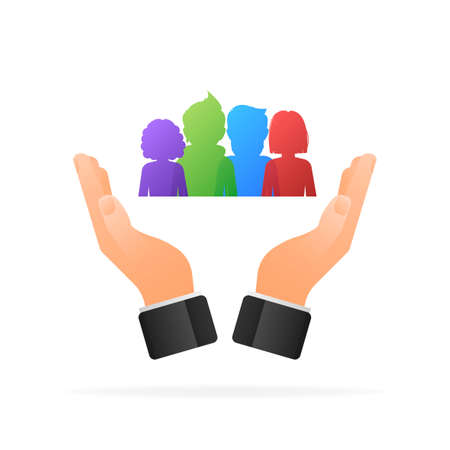1. Understanding Diversity, Equity, and Inclusion (DEI) in the U.S. Context
What is DEI?
Diversity, Equity, and Inclusion—often called DEI—are more than just buzzwords in the United States. In creative businesses, these principles help shape a workplace where everyone feels valued and respected. Let’s break down what each term means:
| Term | Definition | Why It Matters in the U.S. |
|---|---|---|
| Diversity | The presence of differences within a group. This can include race, ethnicity, gender, age, sexual orientation, disability, religion, and more. | The U.S. has a long history of people from different backgrounds coming together. Embracing diversity helps businesses reflect their communities and connect with wider audiences. |
| Equity | Ensuring fair treatment and access to opportunities for all individuals by recognizing that some people need different support to succeed. | Because not everyone starts at the same place due to historical or social barriers, equity means giving people the specific resources they need to thrive. |
| Inclusion | Creating an environment where everyone feels welcome, respected, and able to contribute fully. | Inclusion moves beyond having diverse staff—it’s about making sure every voice is heard and valued in business decisions and creative processes. |
The Unique Importance of DEI in American Business Culture
The U.S. is known for its cultural melting pot. This diversity brings fresh ideas and creativity but also highlights inequalities that must be addressed. Creative businesses—like design studios, advertising agencies, and media companies—have a special role because their work shapes public opinion and culture. By prioritizing DEI:
- Better Ideas: Teams with different perspectives come up with more innovative solutions.
- Larger Audience Reach: A business that understands many cultures can create products or campaigns that appeal to more people.
- Stronger Communities: Inclusive workplaces help build trust both inside the company and with clients or customers.
- Legal Compliance: The U.S. has laws against workplace discrimination. Following DEI practices can help businesses avoid legal trouble.
Common Myths About DEI in the U.S.
| Myth | The Reality |
|---|---|
| Diversity means lowering standards. | Diversity is about widening the talent pool—not reducing quality or expectations. |
| If you have diversity, inclusion will happen naturally. | Diversity without inclusion can leave team members feeling isolated; inclusion needs intentional effort. |
| DEI only benefits minority groups. | A diverse and inclusive environment benefits everyone by encouraging learning and growth for all employees. |
Key Takeaway:
Understanding what diversity, equity, and inclusion mean in the American context is essential for any creative business aiming to grow sustainably and responsibly in today’s dynamic market.
2. The Business Case for DEI in Creative Industries
Why DEI Matters for Creative Businesses in the U.S.
Diversity, Equity, and Inclusion (DEI) are not just buzzwords—they are essential strategies for building a successful creative business in today’s U.S. market. Embracing DEI means more than just meeting quotas or following trends; it’s about unlocking real benefits that help your business grow, innovate, and connect with people from all backgrounds.
Tangible Benefits of DEI
Enhanced Innovation
When teams include people with different backgrounds, perspectives, and experiences, they generate more unique ideas. This diversity fuels creativity, helping businesses come up with fresh concepts and solutions that stand out in competitive industries like design, advertising, and media.
Improved Team Performance
Diverse teams tend to communicate better and solve problems faster. When everyone feels valued and included, employees are more engaged and motivated to do their best work. This leads to higher productivity and better project outcomes.
Stronger Brand Reputation
U.S. consumers care about social responsibility. Companies that prioritize DEI earn trust and loyalty from customers who want to support brands that reflect their values. A strong reputation for inclusion can help attract new clients and retain existing ones.
Intangible Benefits of DEI
- Better Decision-Making: Teams that value diverse perspectives make smarter decisions by considering multiple viewpoints.
- Positive Work Culture: Inclusive workplaces foster a sense of belonging, which reduces turnover and helps attract top talent.
- Greater Community Impact: By representing a wider range of voices, creative businesses can create content and campaigns that resonate with more people across the U.S.
Quick Comparison: Benefits of DEI
| Benefit | Description | Impact on Business |
|---|---|---|
| Innovation | Diverse teams spark new ideas | Stays ahead in the market |
| Team Performance | Inclusive environments boost collaboration | Better results & productivity |
| Brand Reputation | Consumers see commitment to values | Loyal customers & positive image |
| Work Culture | Employees feel respected & included | Higher retention & engagement |
| Community Impact | Create relatable content for all audiences | Larger customer base & influence |
The Takeaway for U.S. Creative Businesses
Pursuing DEI is a smart move for any creative business aiming to thrive in the United States. The tangible rewards—like innovation, teamwork, and brand strength—are clear, but the intangible benefits also build a foundation for long-term success in a diverse society.

3. Recognizing Bias and Barriers in the Creative Sector
The creative industry in the U.S. is filled with talent, innovation, and passion, but it’s not immune to issues of bias and structural barriers. These challenges can make it harder for people from diverse backgrounds to break into and succeed in the field. Understanding what these obstacles look like is a crucial first step toward building a more inclusive business.
Common Types of Bias in Creative Businesses
Bias can show up in many forms within creative workplaces. Sometimes it’s intentional, but more often it’s unconscious—meaning people don’t always realize they’re doing it. Here are some examples:
| Type of Bias | How It Shows Up | Impact on Team Members |
|---|---|---|
| Affinity Bias | Preferring to work with people who look like us or have similar backgrounds | Limits diversity in hiring and promotions |
| Gender Bias | Assuming certain roles are better suited for men or women | Creates unequal opportunities for leadership and recognition |
| Racial Bias | Overlooking candidates from underrepresented racial or ethnic groups | Narrows perspectives and hinders innovation |
| Ageism | Favoring younger or older creatives based on stereotypes | Excludes valuable experience or fresh ideas from the team |
| Disability Bias | Lack of accessible tools, spaces, or flexible work options | Makes it difficult for people with disabilities to participate fully |
Structural Barriers That Limit Inclusion
Apart from individual bias, there are larger, built-in obstacles that can keep creative businesses from being truly inclusive. Some examples include:
- Lack of Diverse Leadership: When top positions are mostly held by one group, it’s hard for others to see themselves advancing.
- Networking Gaps: Many job opportunities come through personal connections, which aren’t always available to everyone.
- Unpaid Internships: These often favor those who can afford to work without pay, leaving out talented individuals who need income.
- Cultural Gatekeeping: Creative trends and decisions may be shaped by a limited set of voices, excluding new perspectives.
- Inequitable Access to Resources: Smaller agencies or freelancers from marginalized communities might struggle to access funding, technology, or mentorships.
Why Addressing These Challenges Matters in the U.S.
The U.S. prides itself on being a land of opportunity and creativity. But when bias and barriers go unaddressed, we miss out on the full range of ideas and talent that drive innovation forward. Tackling these issues head-on isn’t just about fairness—it’s about building stronger teams, reaching wider audiences, and shaping a future where everyone has a chance to shine.
4. Strategies to Foster an Inclusive Creative Workplace
Building a Culture of Inclusion: Actionable Steps
Fostering diversity, equity, and inclusion (DEI) in a creative business goes beyond just words—it requires intentional actions every day. Here are practical strategies tailored for U.S.-based creative businesses that want to create a truly inclusive environment.
Inclusive Hiring Practices
- Widen Your Talent Pool: Post job openings on diverse platforms, including those targeting underrepresented groups.
- Bias-Free Job Descriptions: Use gender-neutral language and focus on essential skills rather than traditional credentials.
- Diverse Interview Panels: Assemble interviewers from different backgrounds to minimize unconscious bias.
Leadership Development for All
- Mentorship Programs: Pair new hires or junior staff with experienced mentors from various backgrounds.
- Leadership Training: Offer workshops on inclusive leadership and cultural competency for current and aspiring leaders.
- Transparent Growth Paths: Clearly outline advancement opportunities and make sure everyone knows how to access them.
Accessible Workspaces
| Aspect | Actionable Step | Benefit |
|---|---|---|
| Physical Access | Add ramps, elevators, and accessible restrooms. | Makes your space welcoming for people with disabilities. |
| Remote Options | Offer flexible work-from-home policies. | Supports parents, caregivers, and those with mobility needs. |
| Tech Accessibility | Select software with screen reader compatibility and closed captioning features. | Ensures everyone can participate fully in meetings and collaborations. |
Open Communication Channels
- Anonymous Feedback Tools: Use surveys or suggestion boxes so employees can share thoughts safely.
- Cultural Celebration Days: Highlight different heritages through company events or newsletters to foster understanding and respect.
- Regular Check-ins: Encourage managers to have one-on-one conversations about team members’ experiences and needs.
Create a Welcoming Atmosphere Every Day
An inclusive workplace is built step by step. By making intentional choices in hiring, leadership development, workspace accessibility, and communication, your creative business can become a place where everyone feels valued and empowered to contribute their best ideas.
5. Measuring Progress and Sustaining DEI Initiatives
How American Businesses Track DEI Progress
In the U.S., creative businesses recognize that real change requires more than just good intentions. To make sure Diversity, Equity, and Inclusion (DEI) goals are being met, companies use a variety of methods to measure progress. Here are some common strategies:
| Method | Description |
|---|---|
| Employee Surveys | Anonymous surveys help gather honest feedback about workplace culture, inclusion, and any barriers employees may face. |
| Diversity Metrics | Companies track representation across different groups (gender, race, disability status, etc.) in hiring, promotions, and leadership roles. |
| Pay Equity Audits | Regular reviews ensure fair compensation for all employees and help identify gaps that need addressing. |
| Retention & Promotion Rates | Analyzing who stays at the company and who gets promoted can highlight disparities or successes in creating an inclusive environment. |
| Focus Groups & Listening Sessions | Small group discussions give employees a voice and uncover issues that might not show up in surveys. |
| Supplier Diversity Tracking | Some businesses track how much they spend with minority- or women-owned suppliers as part of their DEI strategy. |
Best Practices for Sustaining Long-Term DEI Commitment
Set Clear, Achievable Goals
Create specific DEI objectives tied to business outcomes. Make these goals public within the organization to boost accountability.
Leadership Involvement Matters
The most successful DEI efforts have active support from company leaders. They should model inclusive behavior and regularly communicate the importance of DEI to everyone.
Continuous Learning & Training
Offer ongoing training on topics like unconscious bias, cultural competency, and inclusive leadership. This keeps the conversation alive and helps teams grow together.
Regularly Review & Adjust Strategies
DEI is not “set it and forget it.” Use data from surveys, audits, and metrics to see what’s working—and where there’s room for improvement. Be open to making changes as needed.
Create Safe Feedback Channels
Encourage employees to share their experiences through anonymous feedback tools or open-door policies. Responding thoughtfully shows that their voices matter.
Example: Simple DEI Progress Dashboard
| Metric | This Year’s Goal | Status Update |
|---|---|---|
| % Women in Leadership Roles | 40% | 35% – Improving with recent promotions |
| % Employees of Color Hired This Year | 25% | 28% – Goal achieved! |
| # Unconscious Bias Trainings Held | 6 sessions/year | 4 so far – 2 scheduled next quarter |
Sustaining DEI initiatives in creative businesses is about making progress visible, staying flexible, and keeping everyone involved in the journey toward a more inclusive workplace.


